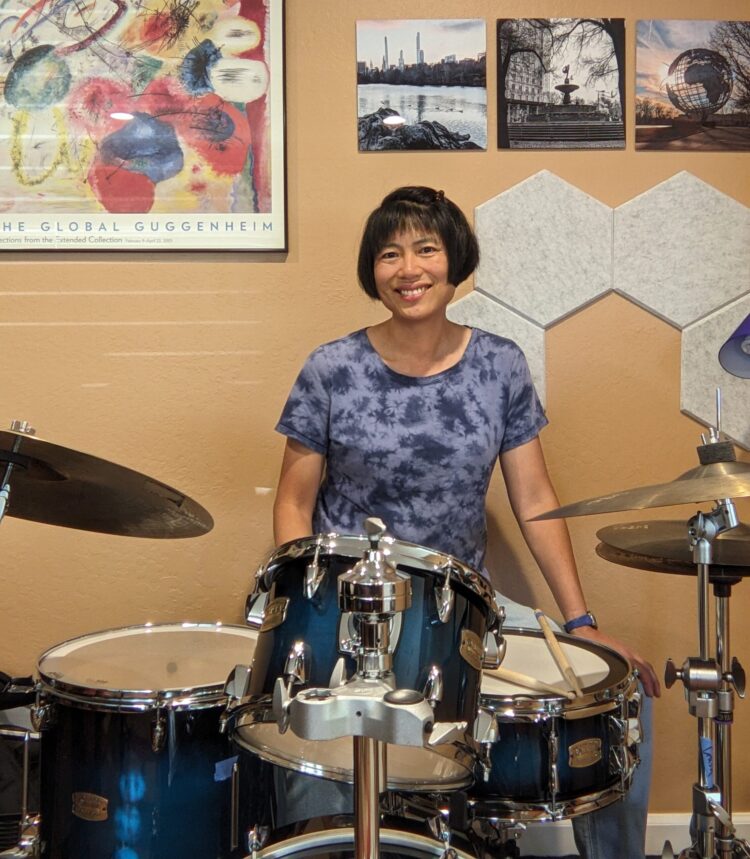In spring 2020, while some FaceTimed or baked bread or pursued other pandemic hobbies, I bought an electronic drum kit. I watched YouTube to learn some basic rock beats. Before long, I was jamming to “Billie Jean,” “Don’t Stop Believing,” “Africa” and other classics from my youth, drawing encouragement from friends who humored my Facebook videos.
Soon, though, this playful adventure became a guilty distraction. The longform science journalism I do as a freelancer requires a ton of focus. Even before drumming videos filled my feeds, it was easy for hours to vanish as I sifted my inbox, typed to-do lists, scrolled social media and indulged in all manner of pseudo-work before realizing in a 4 o’clock panic that I hadn’t made a dent in the feature that was due in a few days. It was becoming a familiar narrative: In desperation I’d request an extension, work feverishly on scant sleep, then bask in a moment of publication-day pride while scolding myself for my lack of discipline.
I felt trapped in these cycles of shame and relief for years, but managed to stay on the treadmill, propelled by the guise of productivity. At some point a series of writing deadlines kept me away from the drum kit for almost a year. It felt sad to neglect my new, fast friend.
Musical rhythms and the writer’s voice
When I hear music, what speaks most powerfully is not words or melodies but rhythm. Making summer mix tapes as a teen in the pre-CD 1980s, I hardly knew lyrics or artist names but recognized a song within seconds by its vibe — a mysterious quality akin to the tone and emotional texture of a story created by the writer’s voice. Even as an Asian-American kid who dutifully trained on classical piano and violin before dabbling with guitar, I always felt a pull toward percussion.
The same was true of physical exercise. The forms that roused my sedentary body to any serious degree were rowing and running — also rhythmic in nature, and comfortably monotonous. Activities requiring grace and coordination, such as dance or aerobics, were a no-go. So it was a stretch to envision all four of my limbs moving skillfully at the drum set at the same time.
Then a silly thing helped nudge my drumming dream toward reality: I learned that my friend’s middle schooler was earning physical education credit by playing drums at home during the COVID shutdown. Boy, would I rather burn calories hitting drums than dragging myself out for a morning run!
In spring 2023, I emailed a local drummer and started weekly lessons. By then, newbie giddiness had given way to greater awareness of the challenge. In the early days I’d just pick up the drum sticks and start banging, delighted by whatever I could play, but now I focused more on what I couldn’t do. When my limbs felt slow or jerky, I doubled down on technique, lured to YouTube hacks such as “3 ways to instantly improve your groove” or “Fix your weak drumming hand in 22 days.” If I had a story draft due, I abstained from the drum set but would still tap rudiments on my rubber practice pad for hours at a time. Once the house reeked of smoke after I snuck out of the kitchen and got carried away trying a new technique, neglecting a pot of oatmeal on the stove.
I eventually ventured into jazz — in part to connect with my teen son and husband, who play trombone and trumpet, but also because my drum teacher, who coaches the jazz bands at our local schools, could help demystify this elusive music genre.
The first time I remember hearing live jazz was around the year 2000, when my husband and I watched tenor saxophonist Wayne Shorter perform at Berklee College of Music in Boston. We also heard Joe Henderson, another tenor great, at Symphony Hall. I was jazz-illiterate then, and they were unknowns to me. At their shows, I wondered how each could belt out a solo on the fly while staying in tune with everybody else, knowing how long to play and who would go next and when the whole song was supposed to end. For someone accustomed to reading music note-for-note from printed pages, jazz was a foreign language.
Over time, I’ve come to think of classical music as a script and jazz as a dialogue. In jazz combos (small ensembles), musicians take turns soloing, while the drummer accompanies each improvisational segment to support and shape the unfolding story.
Shaking off performance jitters
Earlier this spring, journalism deadlines pushed me to the edge of burnout. I made a difficult decision to step off the treadmill for a while and let myself do more jazz drumming. Now I’m realizing that playing jazz might actually help my writing process.
I’ve struggled with drafting features, I think, because a form of performance anxiety creeps in. I obsessively review my notes, get a snack, re-listen to interviews, go for a walk, email sources with follow-up questions and intersperse some of the pseudo-work leading to that 4 p.m. panic.
Many writers do a “shitty first draft,” a barebones sketch that they rework and expand over time. This approach has never worked for me.
Maybe it’s because I haven’t been willing to try.
Playing jazz has made me dare to try.
It’s a little terrifying. A huge challenge with learning a musical instrument as an adult is that, unlike kids — who get to play in school bands while still learning — adults in music ensembles are supposed to know what they’re doing. At least that’s been my fear and assumption.
Dependable timekeeping is the drummer’s first responsibility, artistry second. Same for writing: clarity first, then flair and finesse.
Several recent experiences helped relax those drumming nerves. One took place in mid-July at a weeklong jazz camp, where I’d assured myself I would not have to play any solos. Drum solos are less common than for other instruments; I assumed those that did happen were reserved for more experienced musicians (or at least braver ones). My assumption was wrong. Each member of our combo played a solo in most songs. Rather than something reserved for rare moments of inspiration, improv was a discipline — as though a mic got passed and you had to find something to say.
After several days, it actually became fun to throw down a solo on the spot and be surprised by what came out.
The second experience came when my son volunteered me as a last-minute sub to play live jazz at his workplace happy hour. There was no set list. Songs were chosen on the fly, and most were unfamiliar to me. But the wine-sipping attendees looked happy, the band had fun, and I learned I can do a “shitty first draft” — which, for a novice drummer, means laying down a groove and keeping it steady. Purely functional, nothing fancy.
Dependable timekeeping is the drummer’s first responsibility, artistry second. Same for writing: clarity first, then flair and finesse.
On a morning walk the next day, I told a friend about the impromptu jazz gig. I also said I was having a hard time writing a 20-minute talk for an upcoming conference. She saw, in my fretting and procrastination, the same sort of performance anxiety that plagues my writing. As we parted, she issued an order: “Write a five-minute version of that talk. Don’t comb through notes or email anyone for more info; just go with your gut and show me the draft by noon.” That gave me 90 minutes — not enough time to hem and haw. Like the drum solos at camp, I could not obsess about what I didn’t yet know. I just had had to trust my instincts about what I did know.
I sent a “jazz draft” to my friend a minute before deadline, based on improved key points for my talk.
Jazz lessons for writers
In similar fashion, I made myself draft and send this essay in just a few days, so that I would not talk myself out of doing it. A little clean-up, aka editing and self-editing, came later.
Writing will always be challenging for me, but I’m hoping that “jazz drafts” will continue to instill the process with more confidence, and even some riffs of joy.
Here are some tips, inspired by my jazz journey, for making a first story draft (or other large, complicated task) less daunting:
- Incremental. Set a small, specific goal.
- Immediate. Give yourself an imminent deadline so you don’t have time to wonder or second-guess or calculate whether you can pull it off.
- Accountable. Enlist a friend or coworker to hold you accountable.
- Conversation. Real-time dialogue is a form of improv! When you don’t have someone on hand to bounce your ideas off, read your draft aloud and listen to yourself. It’s amazing how quickly rough spots jump out when spoken rather than scrolled.
- Habitual. Schedule such conversations on a regular basis, for built-in accountability without requiring “initiation” energy.
* * *
Esther Wei-Yun Landhuis (@elandhuis) is a California-based science journalist who covers biomedicine at all stages — lab discoveries, clinical trials, biotech, healthcare and its intersections with law and business.



